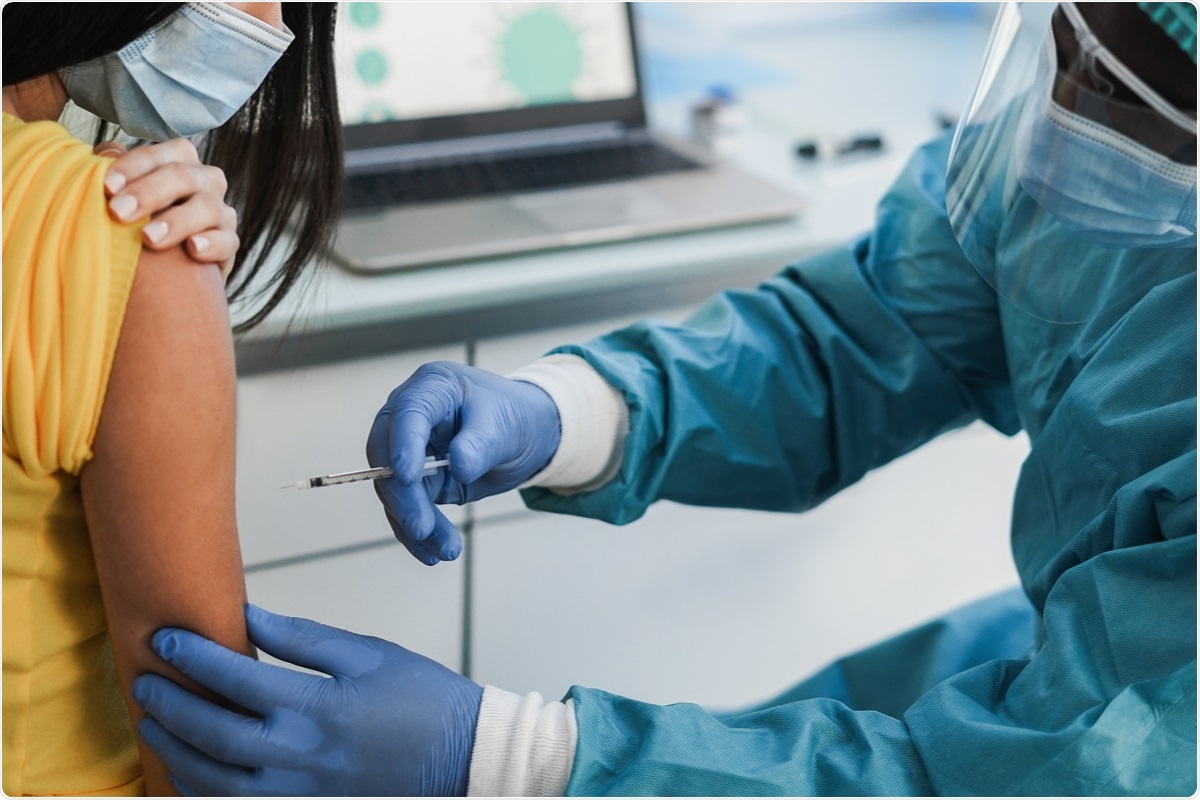An observational study compares immune responses against three vaccines: BNT162b2 (Pfizer mRNA vaccine), mRNA-1273 (Moderna mRNA vaccine), and Ad26.COV2.S (J&J adenovirus vaccine).
 Study: Comparative analysis of human immune responses following SARS-CoV-2 vaccination with BNT162b2, mRNA-1273, or Ad26.COV2.S. Image Credit: DisobeyArt/ Shutterstock
Study: Comparative analysis of human immune responses following SARS-CoV-2 vaccination with BNT162b2, mRNA-1273, or Ad26.COV2.S. Image Credit: DisobeyArt/ Shutterstock
A preprint version of the study is available on the medRxiv* server while the article undergoes peer review.
Vaccine-induced immune responses
Due to the global coronavirus disease 2019 (COVID-19) pandemic caused by the severe acute respiratory syndrome coronavirus 2 (SARS-CoV-2), three vaccines received emergency use authorization (EUA) by the U.S. Food and Drug Administration (FDA) in 2020/2021.
Several studies have published the safety and efficacy data of these vaccines. Initial studies showed that the vaccines have the following efficacies: BNT162b2 95%, mRNA-1273 94.1%, and Ad26.COV2.S 66.9%. But there is limited data on vaccine-induced immune responses comparing the correlate of protection among the three vaccines using identical immunological assays.
In this study, the researchers conducted a prospective longitudinal comparative study to compare the immune responses elicited by the three vaccines. Individuals who had received either of the three vaccines were invited to participate in this study. Their antibody responses post-vaccination were evaluated.
Vaccination elicits an immune response by the host resulting in the production of neutralizing antibodies. The levels of neutralizing antibodies can act as a correlate of protection. However, this correlation has not been established. This study also tries to establish a correlate of protection.
An observational study
A total of 73 individuals participated in the study. They received the BNT162b2 (25), mRNA-1273 (24), or Ad26.COV2.S (24) vaccines. Participants were prospectively enrolled if they planned to take two doses of the mRNA vaccine or a single dose of the adenoviral vaccine. Whole blood was collected on the day of enrolment or first vaccination and 21-31 days and 45-63 days following each initial vaccination.
Studying immune responses
Identical assays were used to study the humoral responses of the participants. Researchers carried out a SARS-CoV-2 receptor-binding domain (RBD) ELISA on the samples drawn at all three visits. They also did SARS-CoV-2 virus focus reduction neutralization assays (FRNT) on samples from the second and third visits. They performed IFN-γ ELISPOT assays with peripheral blood mononuclear cells (PMBCs) obtained at the third visit to measure the SARS-CoV-2 spike glycoprotein-specific T cell responses.
Comparing immune responses
The BNT162b2 and mRNA-1273 vaccines, using mRNA-based platforms, elicited similar RBD ELISA responses and neutralizing antibody capacities in the participants. However, the Ad26.COV2.S adenovirus-based vaccine elicited significantly lower RBD ELISA response and SARS-CoV-2 virus neutralization activity.
It is suggested that a ratio of vaccine/convalescent neutralization titer may serve as an immunologic surrogate of protection. Based on the values obtained from the FRNT assays, the ratio of vaccine/convalescent neutralization titer would equate to a predicted protective efficacy of >90% for the two mRNA vaccines and approximately 50% for the adenovirus-based vaccine. These predicted efficacy estimates are comparable to the observed estimates of vaccine effectiveness for the two mRNA vaccines.
The researchers suggest that this data supports the use of vaccine/convalescent titer as a correlate of protection. However, the predicted efficacy for the Ad26.COV2.S vaccine was calculated to be approximately 50% which is lower than the observed 66.9% efficacy. This could be because of Ad26.COV2.S recipients were mostly older men or a limitation of the calculation.
Further studies will be needed to confirm the precise serum neutralizing antibody levels that would correlate with protection. It is also essential to identify and standardize assays to determine the serum neutralizing antibody levels.
The mRNA-1273 vaccine recipients showed a significantly higher magnitude of spike glycoprotein-specific IFN-γ producing T cells following when compared with BNT162b2 and Ad26.COV2.S recipients. The T cell responses between BNT162b2 and Ad26.COV2.S recipients were similar. This suggests that the T cell responses are probably not responsible for the enhanced protection provided by BNT162b2 versus Ad26.COV2.S.
Limitations of the study
Due to the limited number of participants studied, within-group comparisons were not possible. The three vaccines had different dosing regimens, and this resulted in different intervals for post-vaccination sampling. The researchers are aware that this could have influenced the observed immunogenicity of the three vaccines.
Implications of the study
The data presented here is consistent with the published efficacy data. This study also provides a direct comparison of the elicited immune responses.
*Important notice
medRxiv publishes preliminary scientific reports that are not peer-reviewed and, therefore, should not be regarded as conclusive, guide clinical practice/health-related behavior, or treated as established information.
- Barbeau, D. et al. (2021) "Comparative analysis of human immune responses following SARS-CoV-2 vaccination with BNT162b2, mRNA-1273, or Ad26.COV2.S". medRxiv. doi: 10.1101/2021.09.21.21262927.
Posted in: Medical Science News | Medical Research News | Disease/Infection News
Tags: Adenovirus, Antibodies, Antibody, Blood, Cell, Coronavirus, Coronavirus Disease COVID-19, Efficacy, Food, Glycoprotein, Immune Response, Pandemic, Receptor, Respiratory, SARS, SARS-CoV-2, Severe Acute Respiratory, Severe Acute Respiratory Syndrome, Syndrome, Vaccine, Virus

Written by
Dr. Shital Sarah Ahaley
Dr. Shital Sarah Ahaley is a medical writer. She completed her Bachelor's and Master's degree in Microbiology at the University of Pune. She then completed her Ph.D. at the Indian Institute of Science, Bengaluru where she studied muscle development and muscle diseases. After her Ph.D., she worked at the Indian Institute of Science, Education, and Research, Pune as a post-doctoral fellow. She then acquired and executed an independent grant from the DBT-Wellcome Trust India Alliance as an Early Career Fellow. Her work focused on RNA binding proteins and Hedgehog signaling.
Source: Read Full Article
